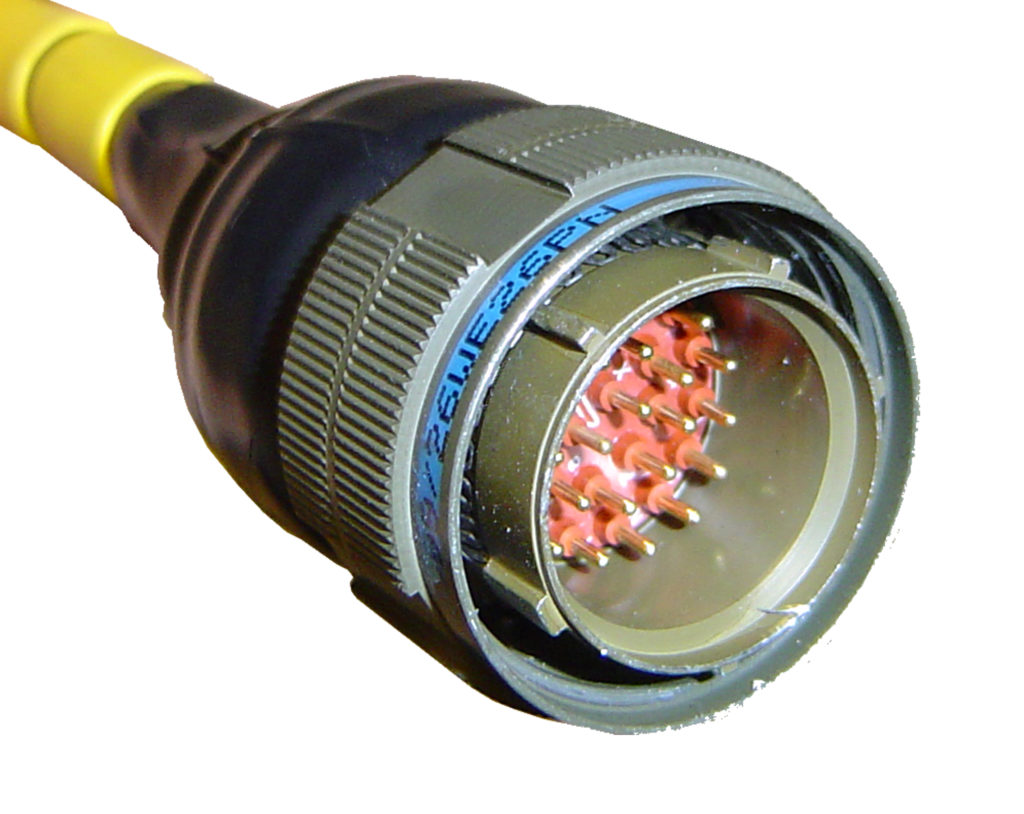In the electronics world there is a wide range of connectors available, from simple push-in, unprotected units such as the well-known and ubiquitous consumer USB connector, through to complex multi-pin connectors that are heavily protected for industrial and rugged applications. The latter – including D38999 connectors – are critical for military tablets and computers and remain a preferred choice for forces all over the world.

In the world of defence electronics, where systems are expected to operate in harsh environments of wide temperature ranges, humidity, vibration, shock and electromagnetic interference, and where large and complex data flows and high power requirements are the norm, only a fully protected connector can rise to the challenge.
USB connectors that are on consumer devices just can’t cope with these extreme demands and will quickly fail. However, one of the advantages of simple connectors such as USB is that they are universally recognised and employed the world over, and they are used to connect computers to just about any peripheral available on the market.
So how do military customers get the benefits of standardised connectors without having to resort to standard USB?
The closest equivalent in the defence world is the MIL-DTL-D38999 family, which is widely employed for both power and data applications across all domains. Its defence-wide acceptance has generated a vast market, with the result that there are numerous suppliers and availability is high. In times of supply chain uncertainty this is an important reason to employ the connector family.
Moreover, D38999 has been around for a long time, and operators are all accustomed to using it. It has proved to be more than adequate for the many applications for which it is used, and is going to remain in use for many years to come: obsolescence is not an issue.
What is D38999?
MIL-DTL-D38999 is a U.S. standard for electronic connectors that has been adopted by NATO and most of the Western world. They are used to connect various electronics within a system and ensure power and data can be transferred securely to achieve a desired military effect. Examples include a military platform with a sensor system or a command centre with various computers running C2 software.
Read more: How does the military use rugged tablet computers?
The connector itself comprises a robust cylindrical metal shell of varying diameters between 9/16th and 25/16th of an inch, with a rubber insert that mounts the pins. The shell can be plated with various protective materials depending on the intended operating environment, including protection against high humidity such as might be experienced in foggy conditions, and saltwater spray.
Associated cabling can also be shrouded in metal wire to ensure that the whole connection “train” is shielded from electromagnetic interference, and cannot adversely affect other electronic systems.
Once the connector has been plugged in, a metal locking ring not only secures the connector against inadvertent de-mating, but also seals the connection against water and dust intrusion. D38999 comes in four series, which differ by the means of locking. These can be fairly simple bayonet-type locks, but GRiD prefers to use the Series III that employs a highly secure triple-thread screwing system.
Locking systems are designed for use with gloves and dust caps are provided to protect open ports. GRiD’s products are supplied with the dust cap attached to a steel lanyard that means the cap will never be lost. Each connector is guaranteed for a set number of mate/de-mate cycles.
D38999 Advantages
Other connectors are occasionally used if specified by the customer, especially where a high-speed bus is needed for data flows above the level of HDMI streams, but GRiD Defence Systems has standardised on D38999 where possible. In addition to the availability and widespread employment issues already mentioned, the D38999 connector offers a number of other advantages.
Perhaps the most important is its inherent flexibility. Through the use of different shell diameters and pin arrangements the connector can be configured to meet a whole range of requirements. Used for both power supply and data transfer, the D38999 can be packed with pins of varying sizes, and can be configured to connect using multiple interface standards.
For power supply connections thicker pins are needed to carry the load without excessive impedance. GRiD typically uses size 20 pins for power supply, which can handle up to 7.5 Amps. This is more than adequate for most systems running on 9-36Volt circuits, but also provides a useful extra margin to cope with power spikes.
For data connections the D38999 can mount large numbers of pins to support multiple connections. This is especially important for connecting to cards, and for systems such as built-in test equipment. In extreme cases a single large-diameter D38999 can host over 100 pins, although 66 would be a more typical maximum. A standard USB-A interface requires only four pins, giving some idea of the number of peripherals that can be connected through a single connector.
Many systems run on standard commercial interfaces, such as the USB and Ethernet series, and it is possible to configure the connector with a standard commercial port. Most users in the military world, however, prefer to have the interfaces running through a pinned connector for security reasons. No-one without intimate knowledge of the connector knows what the pins are connected to, making it very difficult for data to be drawn from the system.
So in conclusion, why do we use D38999 and why should it be the top of your priority list? It’s in widespread usage and readily available; it’s reliable and robust, and operators are used to it; it provides excellent protection across all military domains and operating environments; it’s secure; and above all it’s highly flexible and adaptable to a wide range of applications. Simply put, it’s fit for purpose.
Want to learn more about military connectors including D38999? Contact us if you require further assistance and our expert team can advise on +44 (0)1628 810 230 or drop an email to sales@griduk.com

